The phenotype of hormone-related allergic and autoimmune diseases in the skin: annular lesions that lateralize
- PMID: 23316250
- PMCID: PMC3534378
- DOI: 10.1155/2012/604854
The phenotype of hormone-related allergic and autoimmune diseases in the skin: annular lesions that lateralize
Abstract
Introduction. Sexual dimorphism with an increased prevalence in women has long been observed in various autoimmune, allergic, and skin diseases. Recent research has attempted to correlate this female predilection to physiologic changes seen in the menstrual cycle in order to more effectively diagnose and treat these diseases. Cases. We present five cases of cutaneous diseases in women with annular morphology and distributive features that favor one side over the other. In all cases, skin disease improved with ovarian suppression. Conclusion. Sexual dimorphism in the innate and adaptive immune systems has long been observed, with females demonstrating a more vigorous immune response compared to males. Female sex hormones promote T and B lymphocyte autoreactivity and favor the humoral arm of adaptive immunity. In addition to ovarian steroidogenesis and immunity, intricate pathways coexist in order to engage a single oocyte in each cycle, while simultaneously sustaining the ovarian reserve. Vigorous proinflammatory, vasoactive, and pigment-related cytokines emerge during the demise of the corpus luteum, influencing peripherical sex hormone metabolism of the level of the macrophage and fibroblast. We propose that annular and lateralizing lesions are important manifestations of hormone-related inflammation and recognition of this linkage can lead to improved immune and reproductive health.
Figures
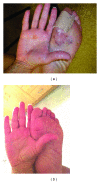
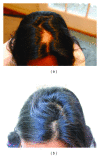
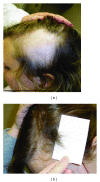
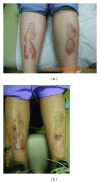
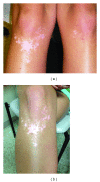
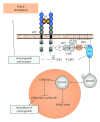
Similar articles
-
Sexual Dimorphism in Innate Immunity.Clin Rev Allergy Immunol. 2019 Jun;56(3):308-321. doi: 10.1007/s12016-017-8648-x. Clin Rev Allergy Immunol. 2019. PMID: 28963611 Review.
-
Luteinizing hormone-releasing hormone (LHRH) receptors in the neuroendocrine-immune network. Biochemical bases and implications for reproductive physiopathology.Ann N Y Acad Sci. 1996 Apr 30;784:209-36. doi: 10.1111/j.1749-6632.1996.tb16238.x. Ann N Y Acad Sci. 1996. PMID: 8651571 Review.
-
Human fallopian tube epithelium co-culture with murine ovarian follicles reveals crosstalk in the reproductive cycle.Mol Hum Reprod. 2016 Nov;22(11):756-767. doi: 10.1093/molehr/gaw041. Epub 2016 Aug 19. Mol Hum Reprod. 2016. PMID: 27542947 Free PMC article.
-
Sexual dimorphism in autoimmune disease.Curr Mol Med. 2009 Dec;9(9):1058-79. doi: 10.2174/156652409789839116. Curr Mol Med. 2009. PMID: 19747114 Review.
-
Corpus luteum as a novel target of weight changes that contribute to impaired female reproductive physiology and function.Syst Biol Reprod Med. 2016 Aug;62(4):227-42. doi: 10.3109/19396368.2016.1173743. Epub 2016 May 17. Syst Biol Reprod Med. 2016. PMID: 27187064 Free PMC article.
References
-
- Oertelt-Prigione S. The influence of sex and gender on the immune response. Autoimmunity Reviews. 2012;11:A479–A485. - PubMed
-
- Trawick DR, Holm C, Wirth J. Influence of gender on rates of hospitalization, hospital course, and hypercapnea in high-risk patients admitted for asthma: a 10-year retrospective study at Yale-New Haven Hospital. Chest. 2001;119(1):115–119. - PubMed
-
- Muñoz-Cruz S, Togno-Pierce C, Morales-Montor J. Non-reproductive effects of sex steroids: their immunoregulatory role. Current Topics in Medicinal Chemistry. 2011;11(13):1714–1727. - PubMed
-
- Ghazeeri G, Abdullah L, Abbas O. Immunological differences in women compared with men: overview and contributing factors. American Journal of Reproductive Immunology. 2011;66(3):163–169. - PubMed
LinkOut - more resources
Full Text Sources
